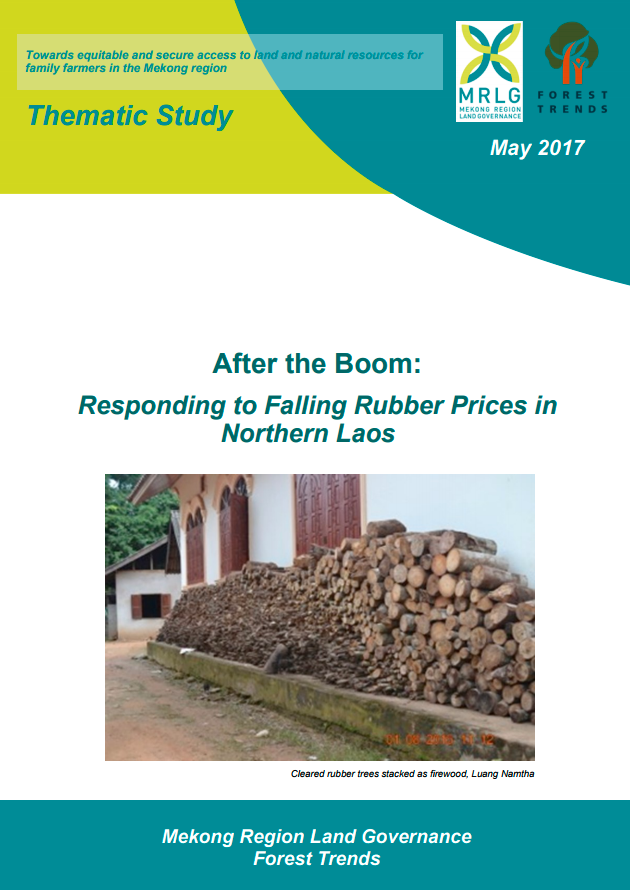Resource information
Rubber prices in northern Laos have fallen significantly over the last few years, eroding much of the initial enthusiasm of both farmers and government officials about rubber providing a way out of poverty for poor upland farmers. This thematic study examines responses to this price drop by Lao rubber growers and state institutions in northern Laos. It also examines the reasons that prices are what they are, given that price volatility was identified as a risk during the mid-2000s, and that in at least some cases, steps were taken to protect contract farmers from falling prices.
Drawing on 20 days of fieldwork in mid-2015 in five districts and seven villages of Luang Namtha and Oudomxai provinces, this study is one of the first efforts to connect an earlier body of research on the rubber-planting boom of the 2000s with the subsequent fall in prices.


